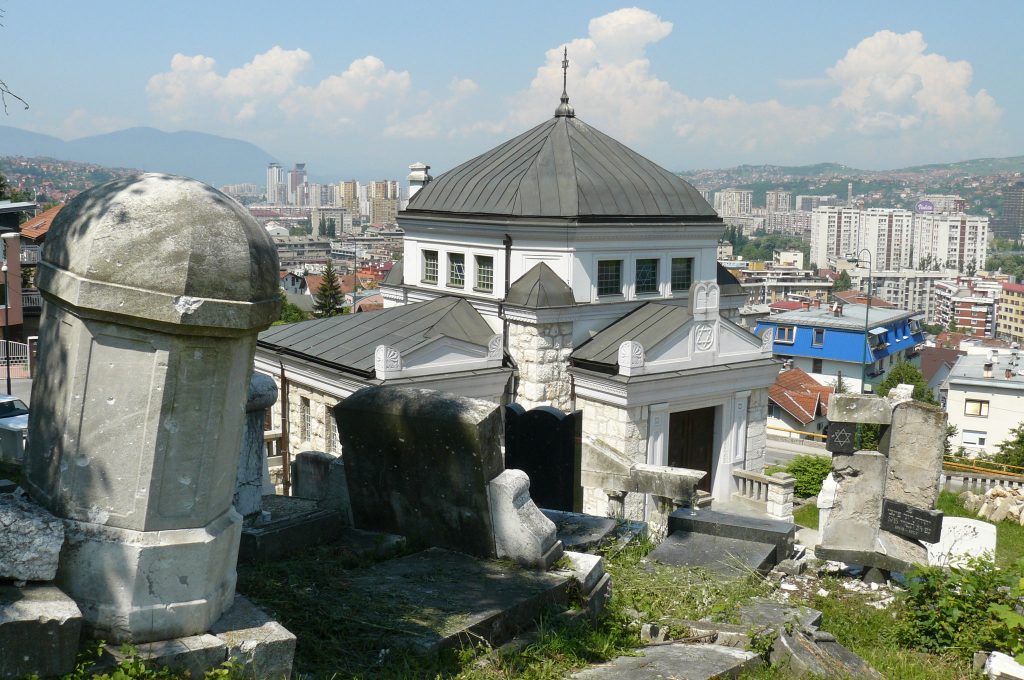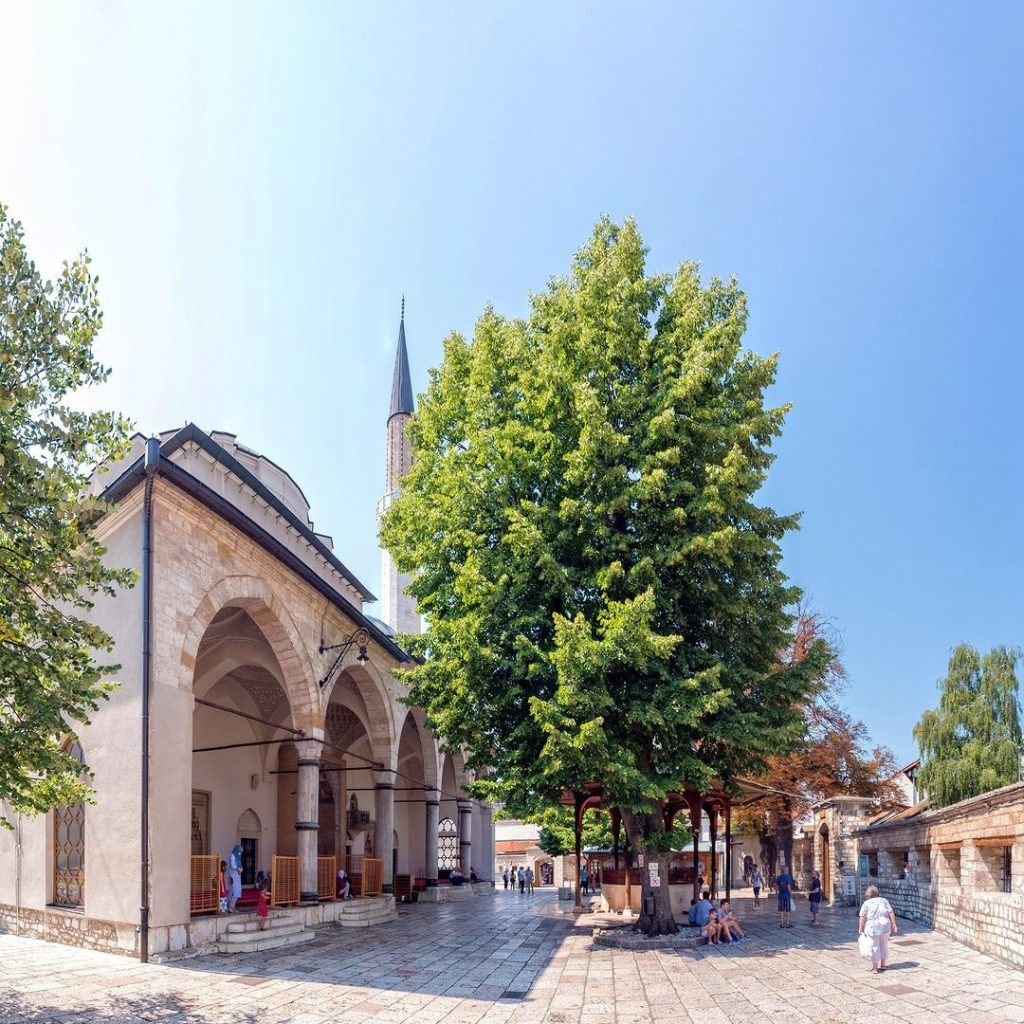
Bosnia’s second Ottoman governor, Gazi Husrev-beg, left a lasting legacy with a series of magnificent 16th-century buildings. Among these, the Gazi Husrev Bey’s Mosque, completed in 1531, stands as the most remarkable.
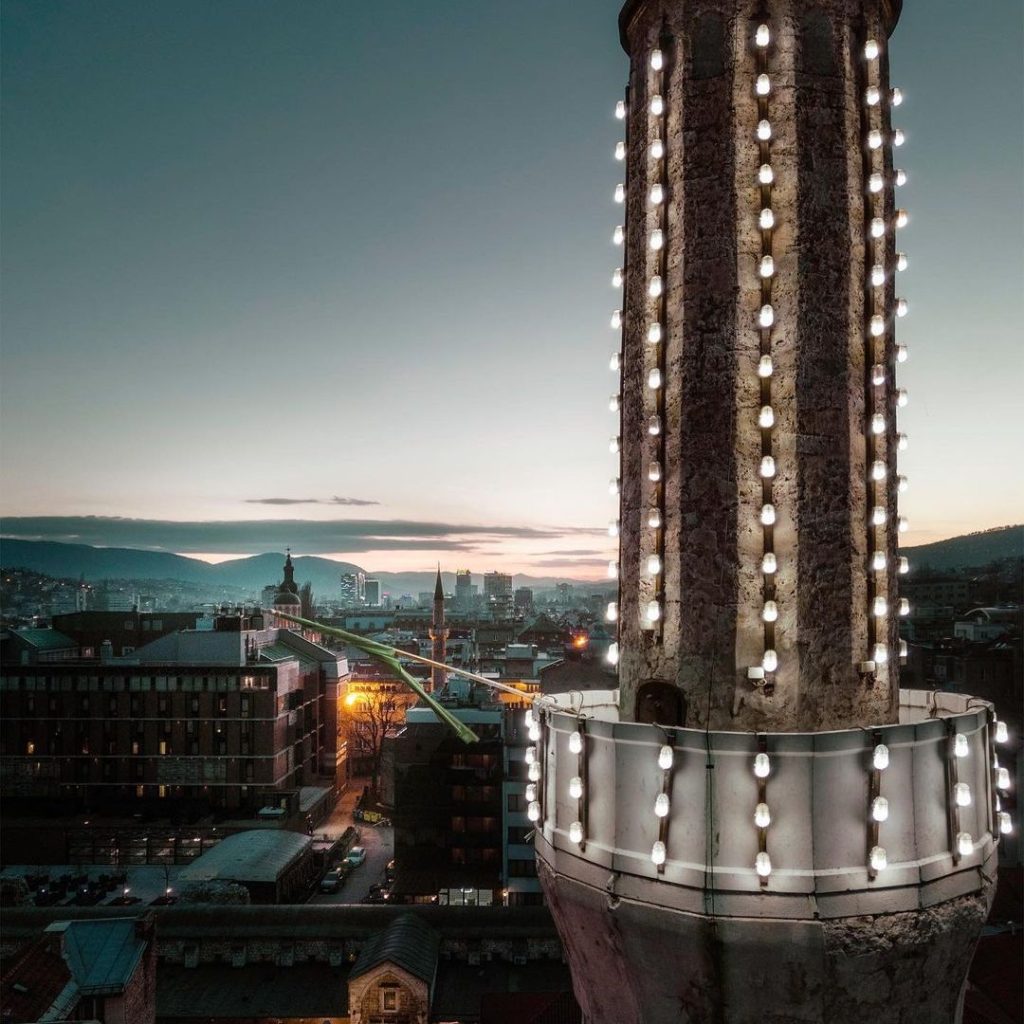
Its 45-meter minaret and beautifully proportioned domed interior are a testament to Ottoman architectural brilliance.
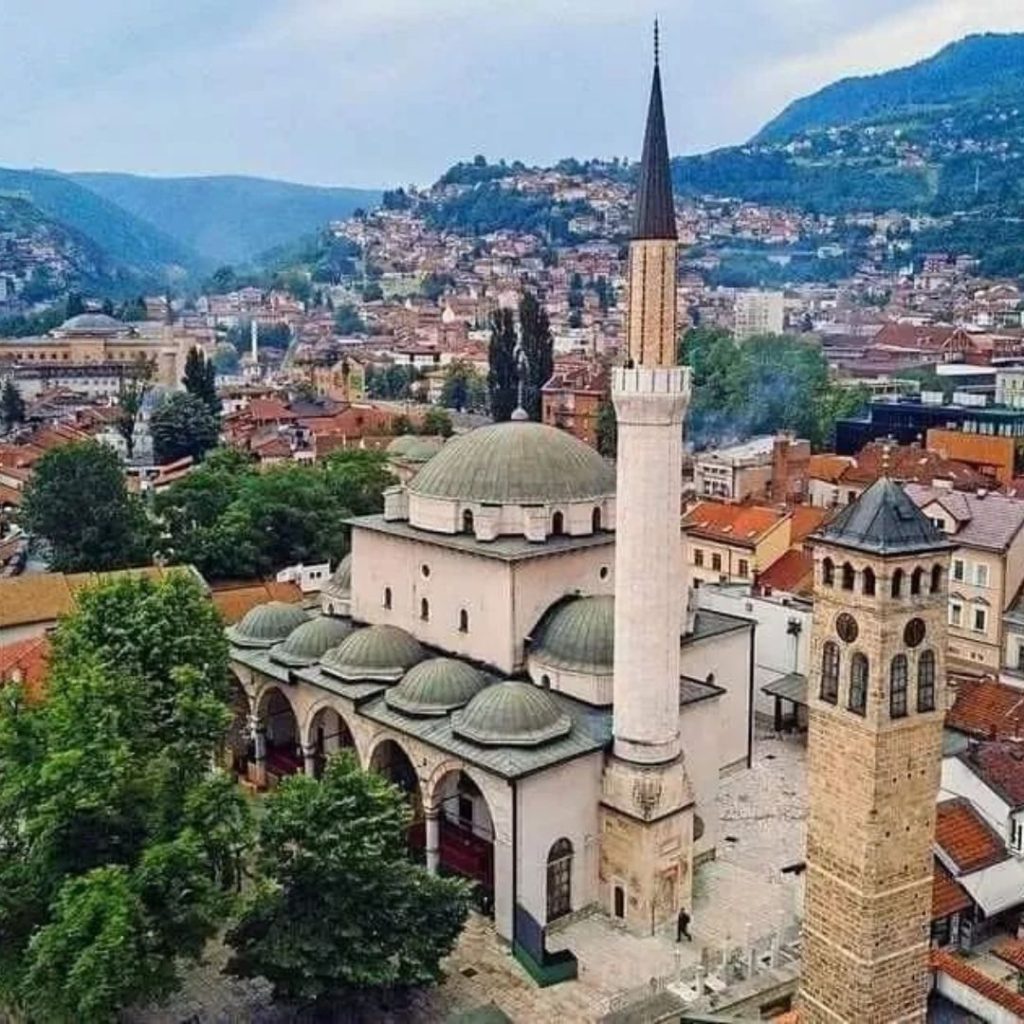
Located in the heart of Sarajevo’s old bazaar, Baščaršija, Gazi Husrev Bey’s Mosque, locally known as Bey’s Mosque, was designed by Adžem Esir Ali, a Persian architect from Tabriz. This mosque, built as part of an endowment by Gazi Husrev Bey, who governed Bosnia from 1521 until 1541, is now considered the most important architectural monument from the Ottoman era in Bosnia and Herzegovina.
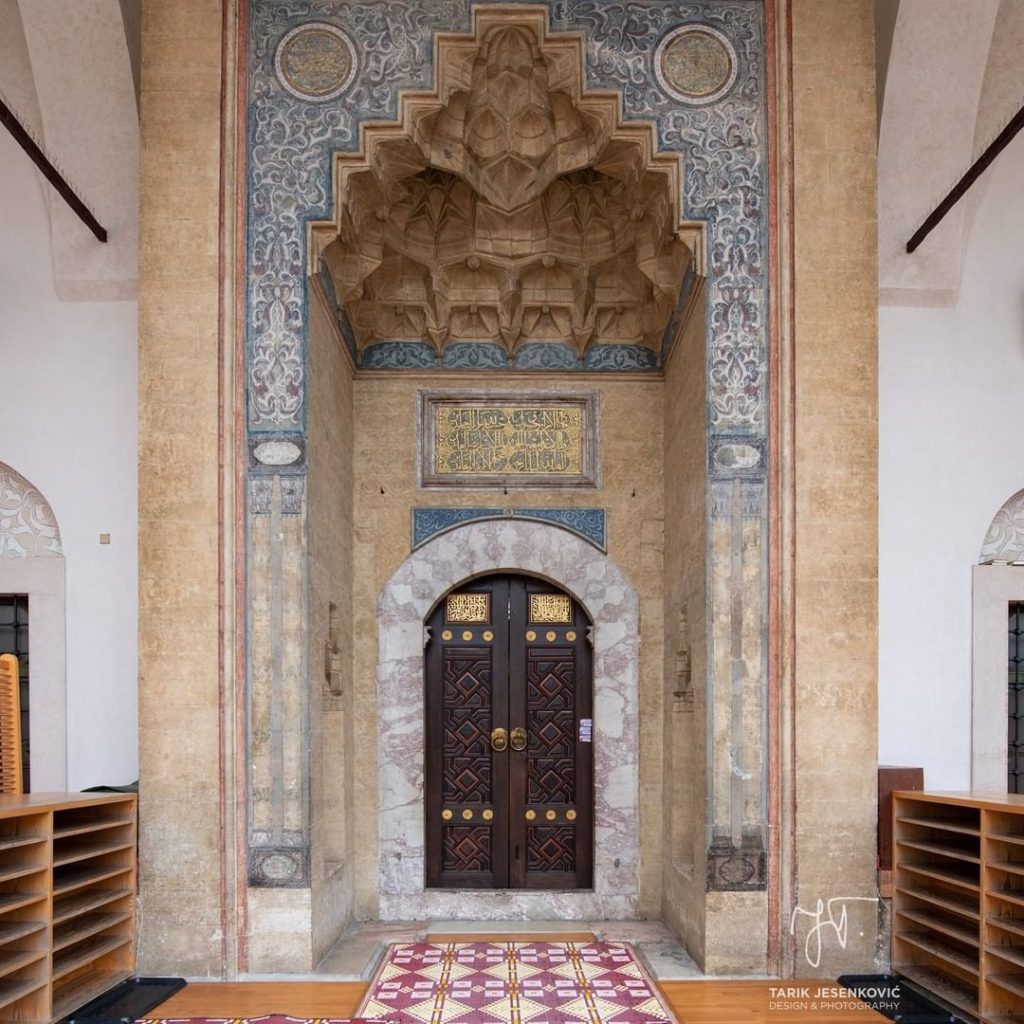
The main entrance of the mosque is exquisitely decorated with beautifully stylized arabesques, intricate ornamentation, gilding, and marble. Above the entrance, there is a stone plaque measuring 120 x 60 cm, inscribed with verses in Arabic.
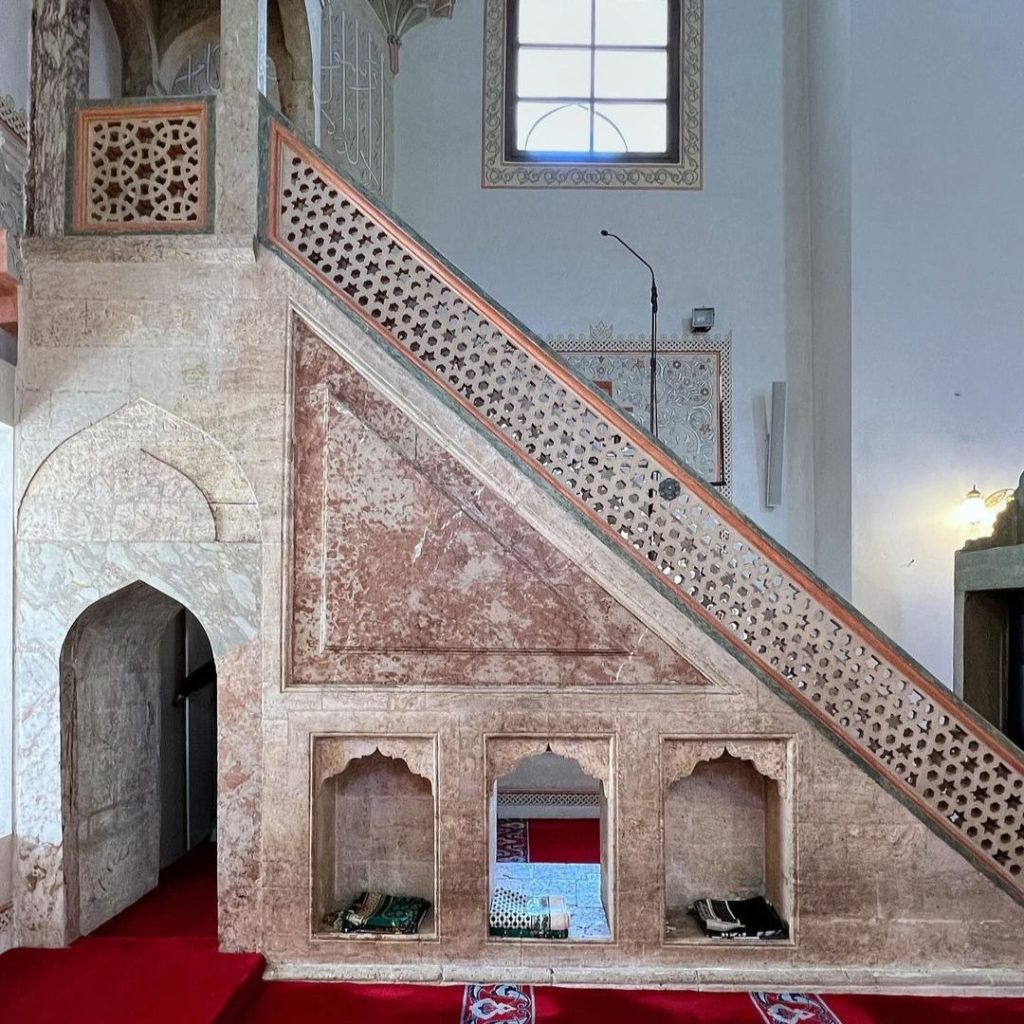
The interior of the mosque radiates an extraordinary artistic atmosphere, captivating visitors with its beauty.
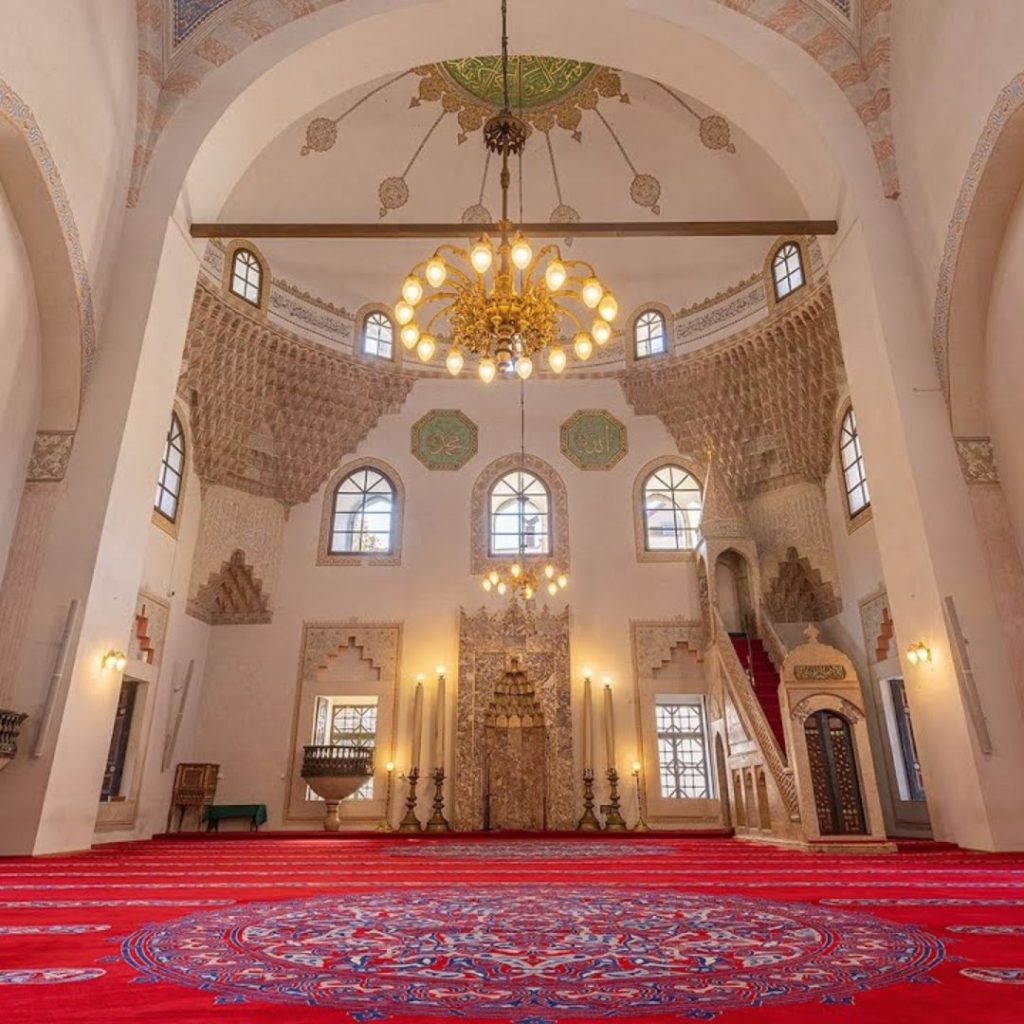
The mosque’s lighting solution, with 51 windows, creates an impression of a larger space than it actually is.
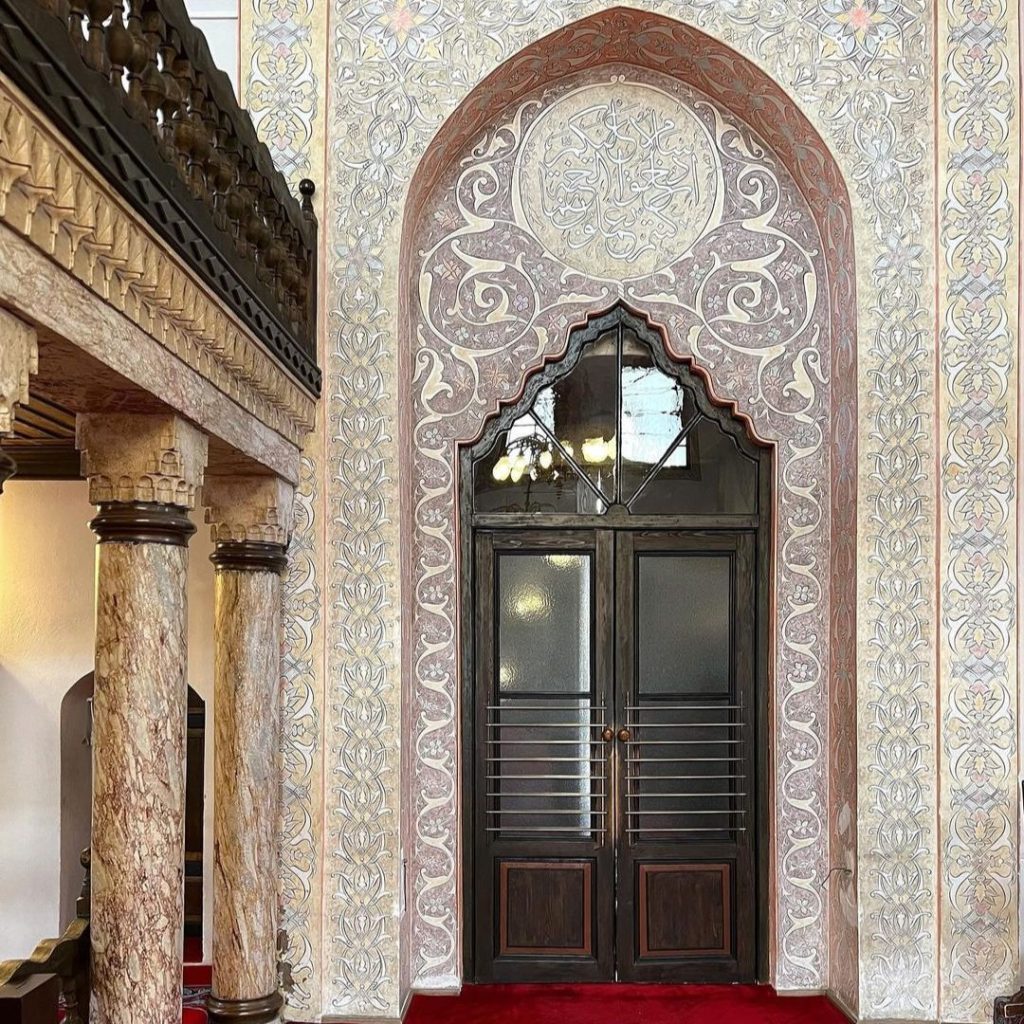
The walls are adorned with intricate ornamentation and calligraphy, featuring verses from the Quran.
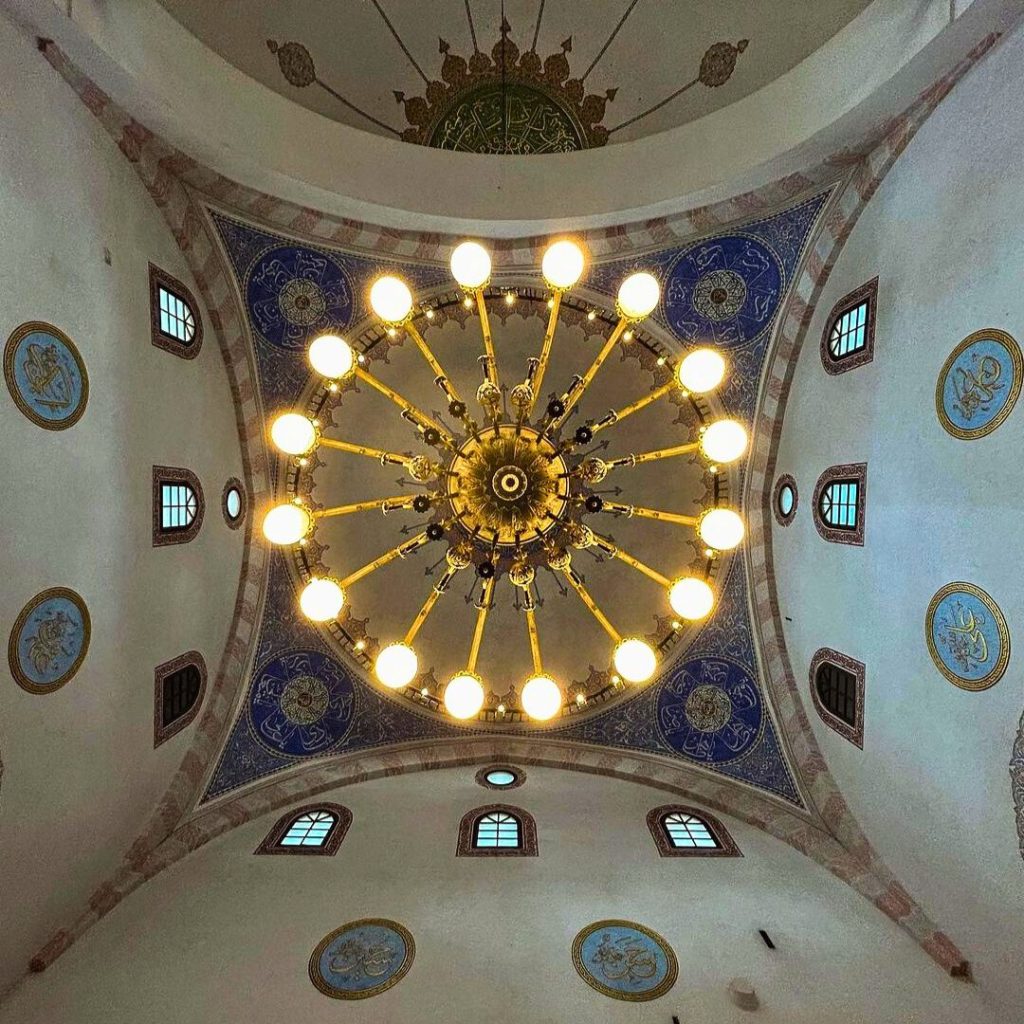
The entire interior is beautifully decorated with these calligraphic inscriptions, creating an atmosphere of serene spirituality.
In the Courtyard of Gazi Husrev-beg’s Mosque

The mosque’s courtyard is a serene place.
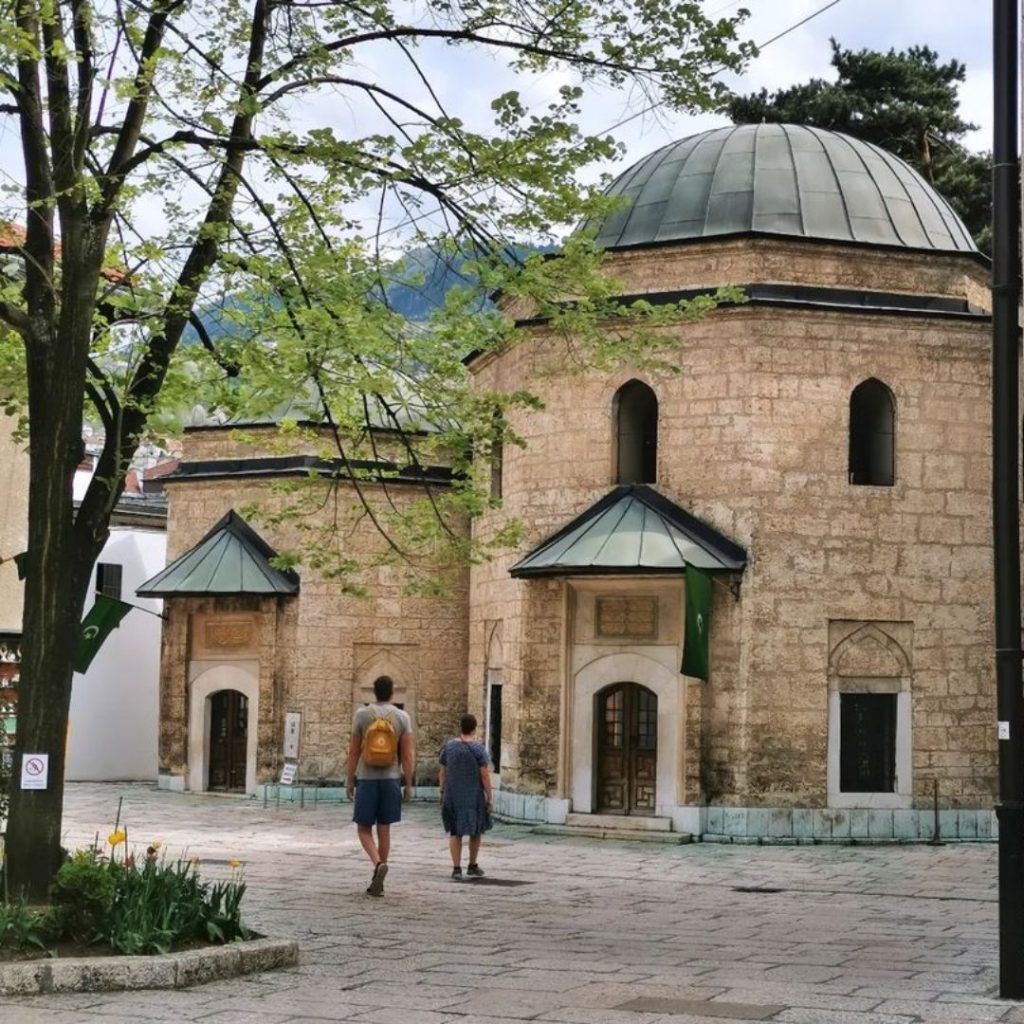
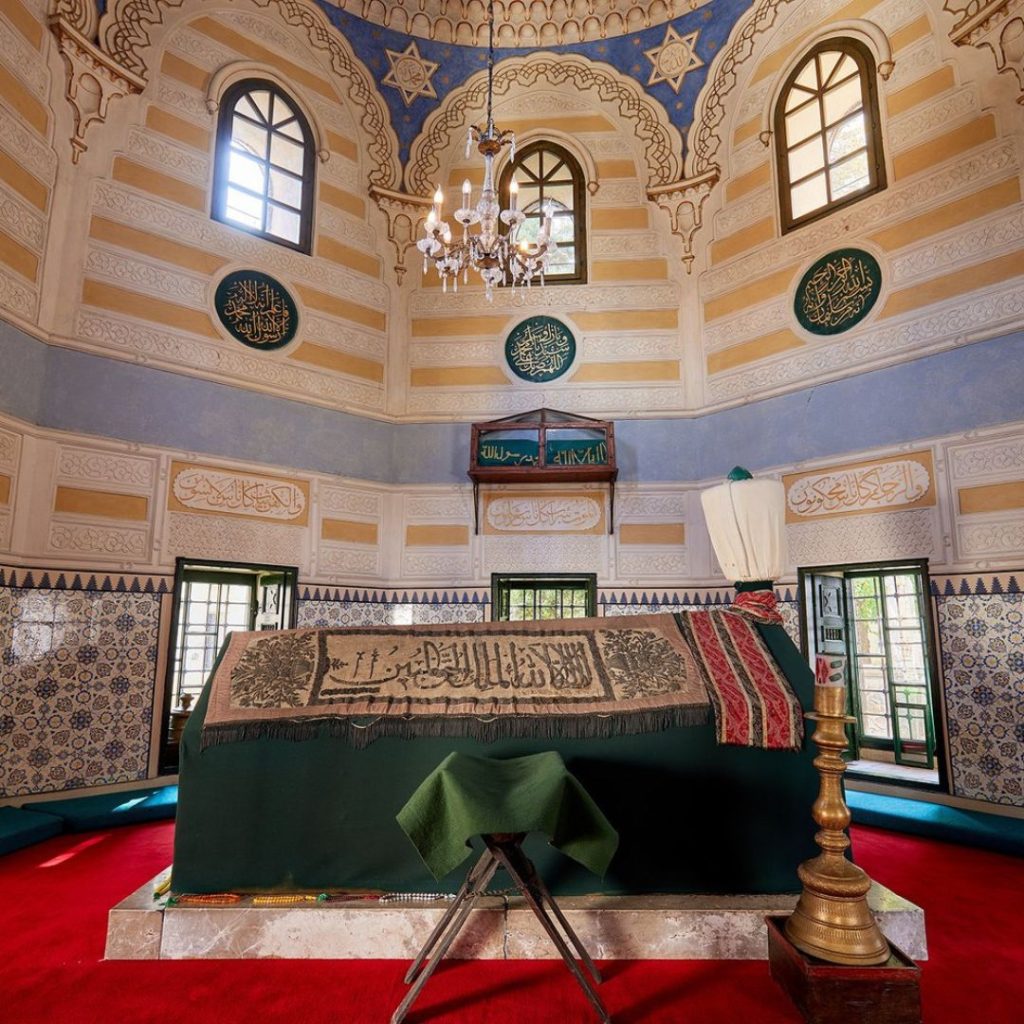
The turbe (tomb) of Gazi Husrev Bey, along with several other notable Bosnian leaders, is located here.
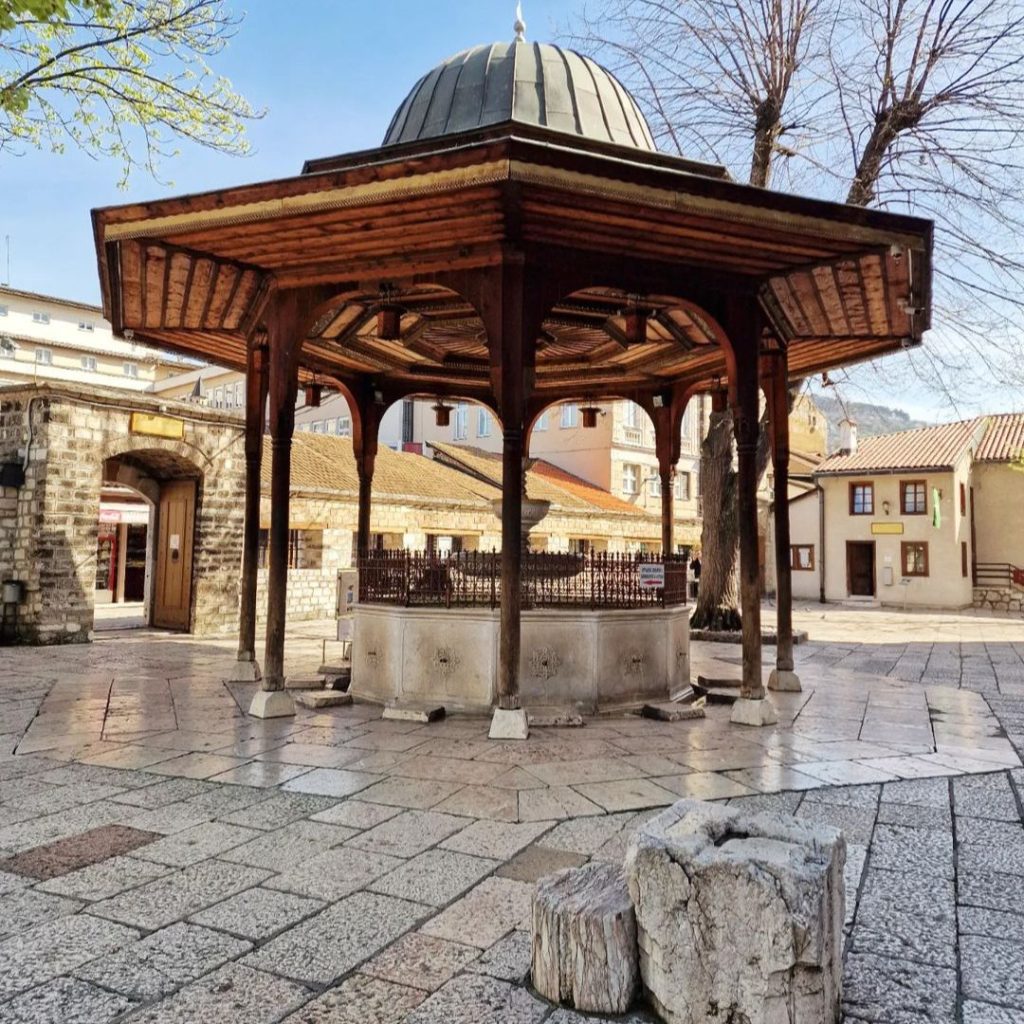
In the mosque’s courtyard, beneath the shade of ancient chestnut trees, also lies a graceful marble fountain (Šadrvan).

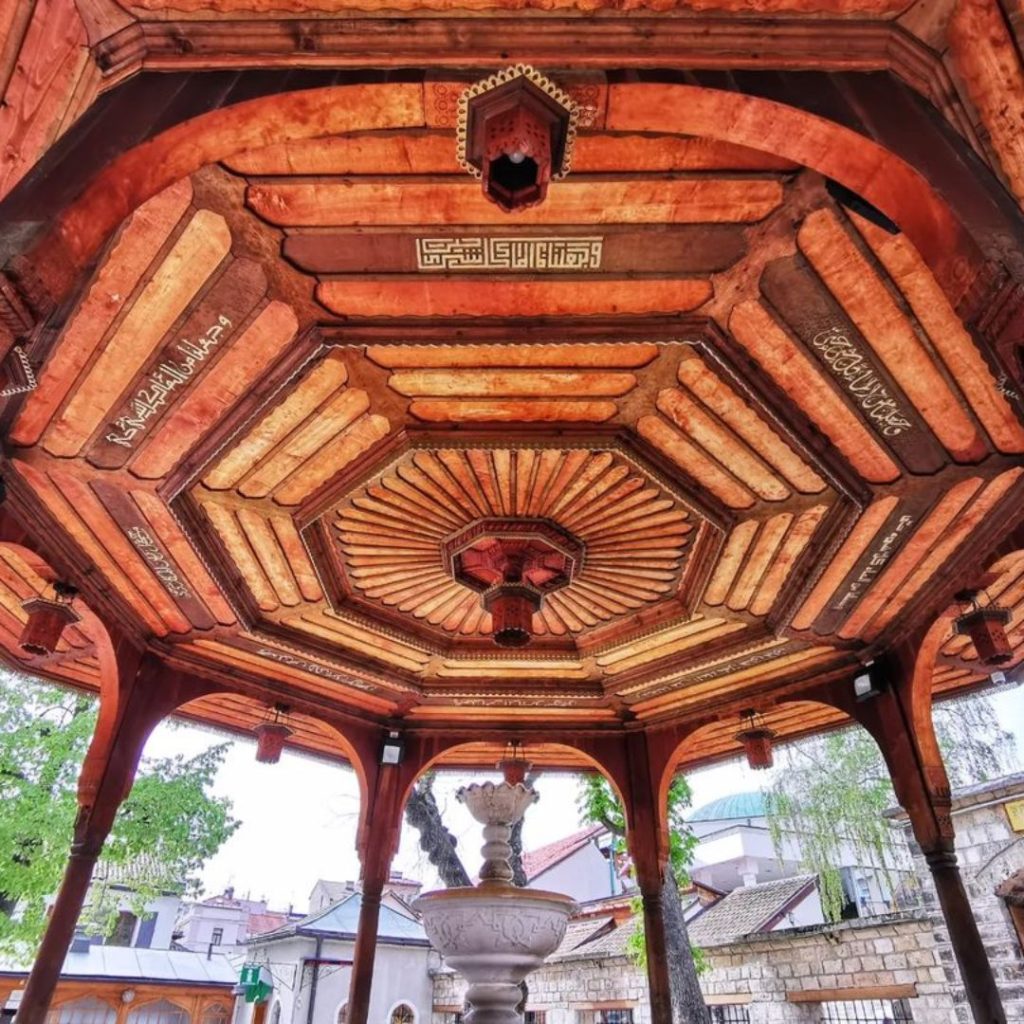
This fountain, supported by eight wooden columns, serves both decorative and functional purposes, providing water for the ritual washing (abdest) before prayer.
To the west of the courtyard, the ablution rooms (Abdesthane) are divided into male and female sections. These facilities, used for ritual washing, have been a part of the mosque since 1530. The water, heated in winter, has been used for centuries to perform the cleansing ritual.
Next to the ablution rooms, a small building called Muvekkithana was constructed in 1859. This room, used for determining the precise time of sunset to mark the beginning of the Akşam prayer, houses instruments for measuring the sun’s height.
Adjacent to the mosque, a public toilet (Begove Hale) was built in 1529. Continuously used and adapted over the years, it is believed to be one of the rare, if not the only, facilities of its kind in Europe at the time.
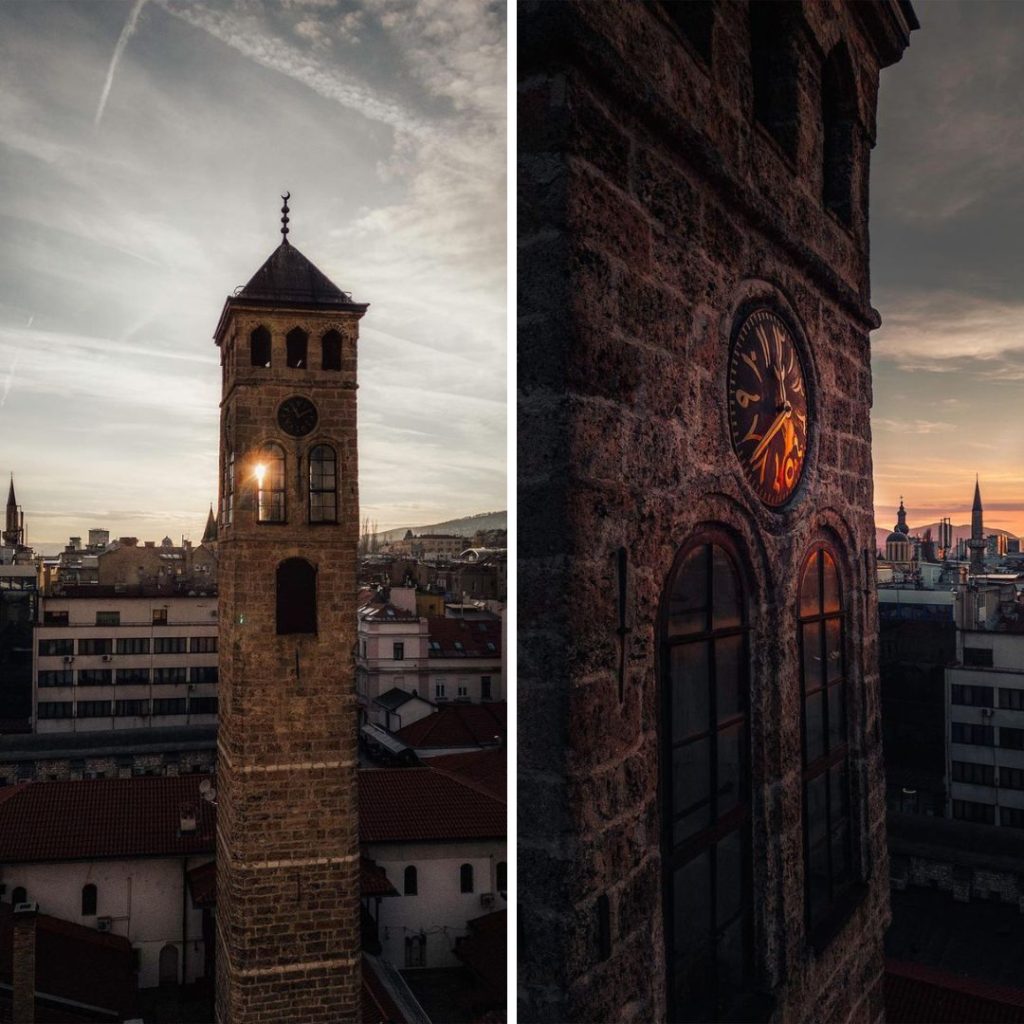
The clock tower (Sahat-kula) near the mosque displays time based on the lunar calendar, where the day ends at sunset, marking a new date. The clock mechanism, acquired from London in 1875, features four clock faces visible from all directions.
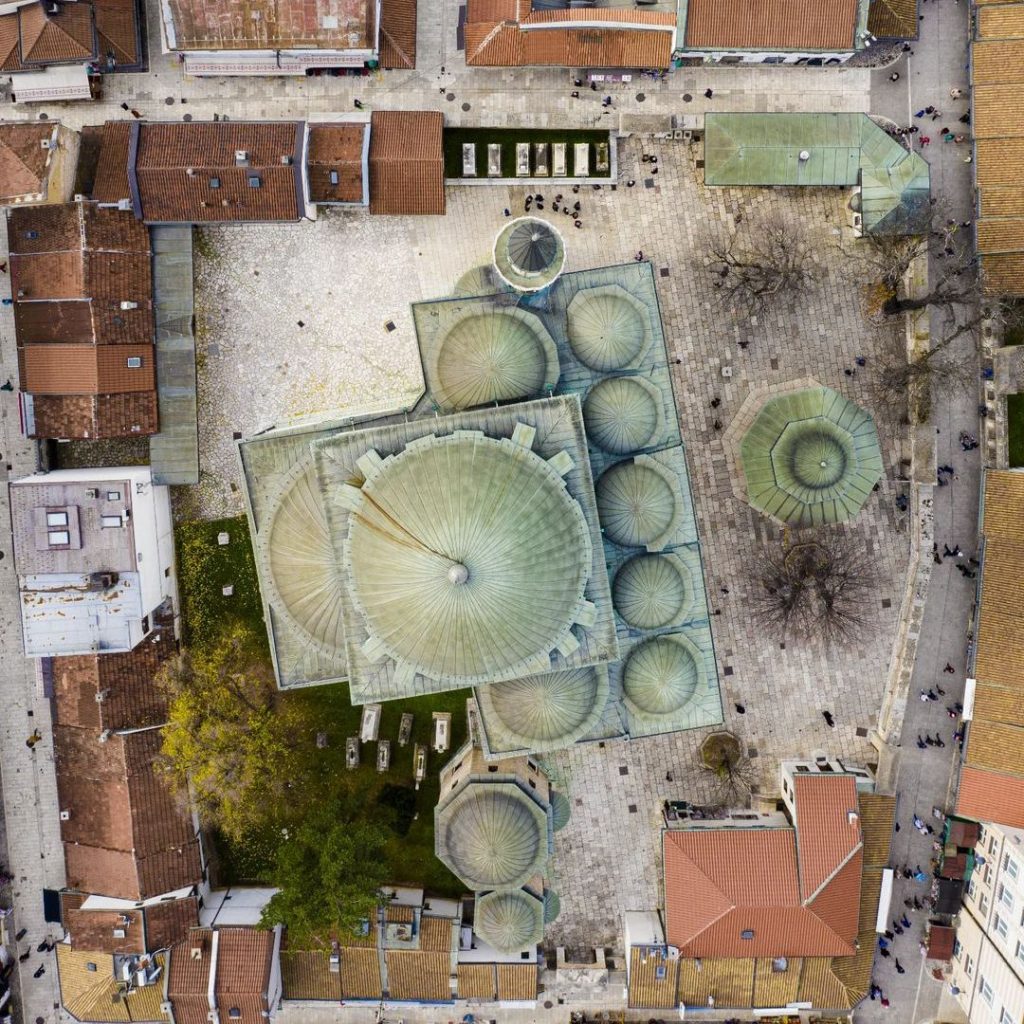
In 2004, Gazi Husrev Bey’s Mosque was declared a National Monument of Bosnia and Herzegovina. The mosque and its surrounding structures, functional and historically significant, contribute to the rich cultural heritage of Sarajevo.
Info
If you are a tourist who is visiting a mosque, here are some tips to keep in mind:
- Dress appropriately: In most mosques, visitors are required to dress modestly. This means that women should wear long sleeves and pants or a long skirt, and cover their hair with a scarf. Men should wear long pants and shirts with sleeves.
- Remove your shoes: Before entering a mosque, you should remove your shoes. There is usually a designated area where you can leave them.
- Respect the prayer times: Mosques have designated prayer times throughout the day, and during these times, visitors are not allowed to enter. It’s important to be aware of the prayer times and plan your visit accordingly.
- Follow the rules: When you enter a mosque, be sure to follow the rules and guidelines. For example, some mosques may require visitors to enter through a specific entrance, or may not allow photography inside.
- Be respectful: Remember that a mosque is a place of worship for Muslims. Be respectful of the space and the people around you. Avoid loud talking or disruptive behavior.
By following these tips, you can have a respectful and enjoyable experience visiting a mosque as a tourist.


